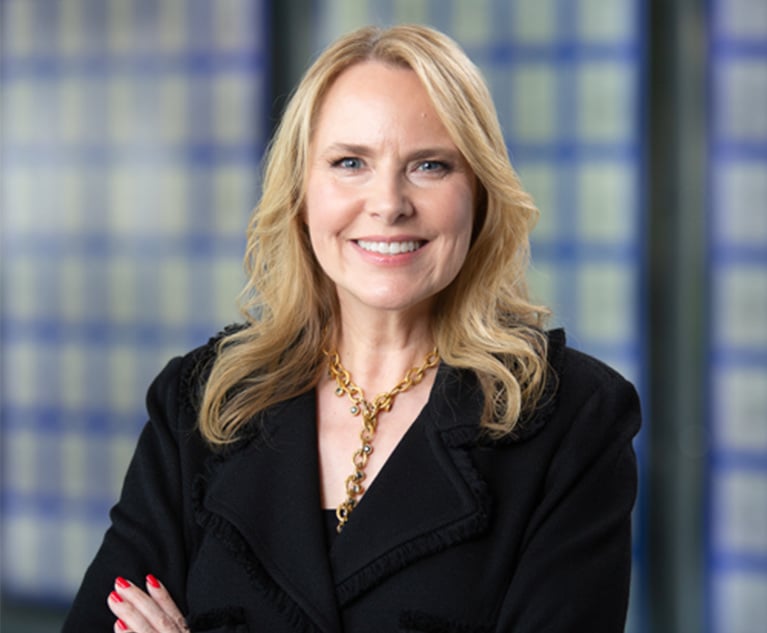The Difference Between Law Schools and Law Firms
Today, law firms and law schools share a lot of similarities, but are ultimately, very different.There are separate cultures that have developed between…
July 25, 2017 at 11:47 AM
4 minute read
The original version of this story was published on Law.com
Today, law firms and law schools share a lot of similarities, but are ultimately, very different.
There are separate cultures that have developed between legal education and legal practice over the years. Law schools have a strong theoretical strain that seems more like what you would expect from one of the social sciences than from a professional school – they are solely in the business of teaching students the rudiments of the legal profession.
Randy Gordon, partner, Gardere sat down with Inside Counsel to discuss the separate cultures that have developed between legal education and legal practice, and how law firms are seeking further collaboration with law schools to ensure that new graduates are “practice-ready.”
Traditionally, law schools taught students to “think like a lawyer,” which entails learning legal rules, learning to apply legal rules to facts, and learning to make fine distinctions between different rules and different facts. However, there has been a recent move to give students more experiential learning opportunities, which range from practical classroom exercises to full-blown legal clinics.
“It's not like med school. I'm not saying it should be, but some find it odd that one learns to be a lawyer mostly from people who don't have much (sometimes any) practice experience,” explained Gordon.
Today, law firms are looking for further collaboration with law schools to ensure that new graduates are “practice-ready.” According to Gordon, if graduates are looking to work at a large law firm, the best thing a school can do is make those folks do deep analytical writing all the time.
“Law firms have attempted to push training obligations back onto law schools and implemented professional development programs to accelerate new lawyers' integration into practice,” he explained. “The attempt to push things back onto law schools comes in the form of the “practice-ready” drumbeat you read in the press. Alums complain. Hiring partners complain. Law schools react by making curricular changes, adding clinics, etc.”
There are limits to what law schools can do without it becoming outrageously expensive. And, it's going to be several more years before the large-law-firm model settles back down into more predictable patterns. A great program requires a dedicated, competent staff and reliance on consultants.
So, what is the solution to this problem?
“Firm management has to decide that the benefit is greater than the cost,” said Gordon. “When I ran our development program, we slowed associate attrition by a couple of years, very profitable years. That resonated with some people. But, it's hard to put a finger on value. It's like business development dollars in some ways–i.e., which dollars actually result in increased revenue?”
About 25 years ago, there was not a national market structure and salary scale for new talent like there is now. In fact, when Gordon graduated law school, New York City was at $83K, Dallas at $56K, Kansas City at $50K. Nowadays, many firms in the AMLAW 200 even pay NYC starting salaries. Per Gordon, this means that new lawyers are billed at rates much higher than 25 years ago, causing pushback from clients, many of whom refuse to pay for training first and second year lawyers. Consequently, there are fewer opportunities for new lawyers to learn-by-watching.
He said, “This is exacerbated by firms focusing on premium work and no longer having small cases and transactions that used to be handled by very junior lawyers. So, the options are to provide expensive simulations via a development program, eat the time for taking associates along to meetings, depositions, etc., or try to push more training onto law schools.”
This content has been archived. It is available through our partners, LexisNexis® and Bloomberg Law.
To view this content, please continue to their sites.
Not a Lexis Subscriber?
Subscribe Now
Not a Bloomberg Law Subscriber?
Subscribe Now
NOT FOR REPRINT
© 2024 ALM Global, LLC, All Rights Reserved. Request academic re-use from www.copyright.com. All other uses, submit a request to [email protected]. For more information visit Asset & Logo Licensing.
You Might Like
View All
Republican FTC Commissioner: 'The Time for Rulemaking by the Biden-Harris FTC Is Over'
4 minute read
So You Want to Be a Tech Lawyer? Consider Product Counseling

FTC Lauds Withdrawal of Proposed Indiana Hospitals Merger After Leaning on State Regulators
4 minute read
How Qualcomm’s General Counsel Is Championing Diversity in Innovation
6 minute readTrending Stories
Who Got The Work
Michael G. Bongiorno, Andrew Scott Dulberg and Elizabeth E. Driscoll from Wilmer Cutler Pickering Hale and Dorr have stepped in to represent Symbotic Inc., an A.I.-enabled technology platform that focuses on increasing supply chain efficiency, and other defendants in a pending shareholder derivative lawsuit. The case, filed Oct. 2 in Massachusetts District Court by the Brown Law Firm on behalf of Stephen Austen, accuses certain officers and directors of misleading investors in regard to Symbotic's potential for margin growth by failing to disclose that the company was not equipped to timely deploy its systems or manage expenses through project delays. The case, assigned to U.S. District Judge Nathaniel M. Gorton, is 1:24-cv-12522, Austen v. Cohen et al.
Who Got The Work
Edmund Polubinski and Marie Killmond of Davis Polk & Wardwell have entered appearances for data platform software development company MongoDB and other defendants in a pending shareholder derivative lawsuit. The action, filed Oct. 7 in New York Southern District Court by the Brown Law Firm, accuses the company's directors and/or officers of falsely expressing confidence in the company’s restructuring of its sales incentive plan and downplaying the severity of decreases in its upfront commitments. The case is 1:24-cv-07594, Roy v. Ittycheria et al.
Who Got The Work
Amy O. Bruchs and Kurt F. Ellison of Michael Best & Friedrich have entered appearances for Epic Systems Corp. in a pending employment discrimination lawsuit. The suit was filed Sept. 7 in Wisconsin Western District Court by Levine Eisberner LLC and Siri & Glimstad on behalf of a project manager who claims that he was wrongfully terminated after applying for a religious exemption to the defendant's COVID-19 vaccine mandate. The case, assigned to U.S. Magistrate Judge Anita Marie Boor, is 3:24-cv-00630, Secker, Nathan v. Epic Systems Corporation.
Who Got The Work
David X. Sullivan, Thomas J. Finn and Gregory A. Hall from McCarter & English have entered appearances for Sunrun Installation Services in a pending civil rights lawsuit. The complaint was filed Sept. 4 in Connecticut District Court by attorney Robert M. Berke on behalf of former employee George Edward Steins, who was arrested and charged with employing an unregistered home improvement salesperson. The complaint alleges that had Sunrun informed the Connecticut Department of Consumer Protection that the plaintiff's employment had ended in 2017 and that he no longer held Sunrun's home improvement contractor license, he would not have been hit with charges, which were dismissed in May 2024. The case, assigned to U.S. District Judge Jeffrey A. Meyer, is 3:24-cv-01423, Steins v. Sunrun, Inc. et al.
Who Got The Work
Greenberg Traurig shareholder Joshua L. Raskin has entered an appearance for boohoo.com UK Ltd. in a pending patent infringement lawsuit. The suit, filed Sept. 3 in Texas Eastern District Court by Rozier Hardt McDonough on behalf of Alto Dynamics, asserts five patents related to an online shopping platform. The case, assigned to U.S. District Judge Rodney Gilstrap, is 2:24-cv-00719, Alto Dynamics, LLC v. boohoo.com UK Limited.
Featured Firms
Law Offices of Gary Martin Hays & Associates, P.C.
(470) 294-1674
Law Offices of Mark E. Salomone
(857) 444-6468
Smith & Hassler
(713) 739-1250






